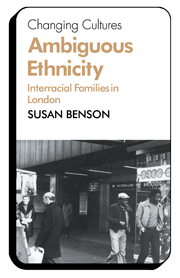Beyond The Whiteness of Whiteness: Memoir of a White Mother of Black SonsPosted in Autobiography, Books, Family/Parenting, Media Archive, Monographs, United States, Women on 2011-03-01 23:22Z by Steven |
Beyond The Whiteness of Whiteness: Memoir of a White Mother of Black Sons
Duke University Press
1996
198 pages
Cloth: ISBN: 978-0-8223-1826-2
Paperback ISBN: 978-0-8223-2044-9
“I am Black,” Jane Lazarre’s son tells her. “I have a Jewish mother, but I am not ‘biracial.’ That term is meaningless to me.” She understands, she says—but he tells her, gently, that he doesn’t think so, that she can’t understand this completely because she is white. Beyond the Whiteness of Whiteness is Jane Lazarre’s memoir of coming to terms with this painful truth, of learning to look into the nature of whiteness in a way that passionately informs the connections between herself and her family. A moving account of life in a biracial family, this book is a powerful meditation on motherhood and racism in America, the story of an education into the realities of African American culture.
Lazarre has spent over twenty-five years living in a Black American family, married to an African American man, birthing and raising two sons. A teacher of African American literature, she has been influenced by an autobiographical tradition that is characterized by a speaking out against racism and a grounding of that expression in one’s own experience—an overlapping of the stories of one’s own life and the world. Like the stories of that tradition, Lazarre’s is a recovery of memories that come together in this book with a new sense of meaning. From a crucial moment in which consciousness is transformed, to recalling and accepting the nature and realities of whiteness, each step describes an aspect of her internal and intellectual journey. Recalling events that opened her eyes to her sons’ and husband’s experience as Black Americans—an operation, turned into a horrific nightmare by a doctor’s unconscious racism or the jarring truths brought home by a visit to an exhibit on slavery at the Richmond Museum of the Confederacy—or her own revealing missteps, Lazarre describes a movement from silence to voice, to a commitment to action, and to an appreciation of the value of a fluid, even ambiguous, identity. It is a coming of age that permits a final retelling of family history and family reunion.
With her skill as a novelist and her experience as a teacher, Jane Lazarre has crafted a narrative as compelling as it is telling. It eloquently describes the author’s delight at being accepted into her husband’s family and attests to the power of motherhood. And as personal as this story is, it is a remarkably incisive account of how perceptions of racial difference lie at the heart of the history and culture of America.


